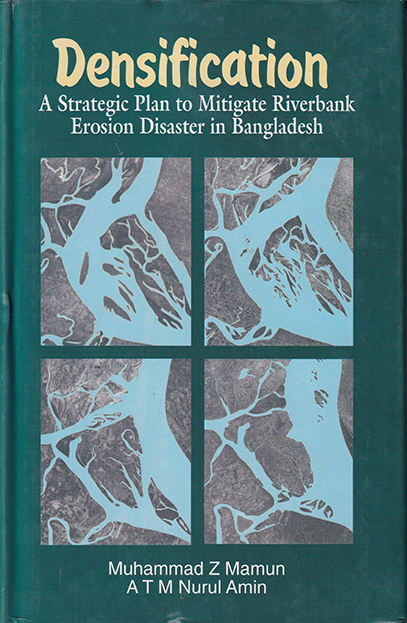- Shop
- Densification - A Strategic Plan to Mitigate Riverbank Erosion Disaster in Bangladesh
Densification - A Strategic Plan to Mitigate Riverbank Erosion Disaster in Bangladesh
https://uplbooks.com/shop/9789840514564-densification-a-strategic-plan-to-mitigate-riverbank-erosion-disaster-in-bangladesh-6469 https://uplbooks.com/web/image/product.template/6469/image_1920?unique=3d813f3
| Language: English |
Tags :
Book Info
The book portrays a development strategy, based on a case study, to mitigate the impact of riverbank erosion disaster by densification of people and their settlements to safer zones. Exploration of this idea involves, in the first instance, to answer why densification is needed and who are the people to be involved in densification addressing issues such as erosion impacts, needs and response, awareness, migration and adjustment behaviour of the vulnerable people. The next focus is to highlight where the densification would take place. This involves defining the safer zones, finding the optimal distribution of population and investigating the scope of safe distance land management. Finally the question of how the densification strategy to be achieved is addressed. The role of economic diversification and human resource development is the core issue here. This is pursued by highlighting sectoral composition and trend; infrastructure development and its impact on habitation and industrial growth; transportation network; prospect of non-agricultural employment and service opportunities; and scope of various vocational training. As a background of the central theme, the book highlights the effects of riverbank erosion on Bangladesh's socio-economic development. The climatic and physiographic characteristics of the land and its suitability and unsuitability for human habitation along with the prevailing settlement pattern are covered in-depth. Finally, a densification system module for patterns, locations, densities of adjusted urban centres is proposed for the erosion-prone people along with appropriate provisions of physical, social, and economic infrastructures. On the subject presentation, it may be said that the text is almost entirely finding-based instead of analytical. For detailed analysis one would have to consult Mamun (1996b), but there should be little difficulty in following the concept of the strategy without reference to it.

A T M Nurul Amin
A T M Nurul Amin is a Professor and Coordinator of Urban Environmental Management Program, School of Environment, Resources and Development, Asian Institute of Technology (AIT), Thailand. Dr Amin was Division Chairman of Human Settlements Development at AIT during 1991-93. He is an economist specializing in the areas of Development Economics, Urbanization and Urban Environmental Planning. He has been a senior UN Fellow with the United Nations Centre for Regional Development (UNCRD), Nagoya, Japan and a Guest Editor of Regional Development Dialogue.

Muhammad Z Mamun
Muhammad Ziaulhaq Mamun, former Director of the Institute of Business Administration (IBA) at the University of Dhaka, has authored four books, edited one book, and contributed to 13 book sections. He has received the prestigious "UGC Bangladesh Award" twice (2013 and 2017) and the "University of Dhaka Ibrahim Memorial Gold Medal" three times (2001, 2007 & 2017) in recognition of his contributions to Economics and Business Studies.



